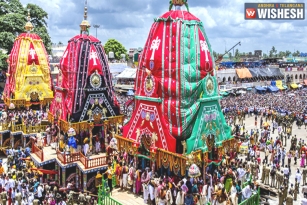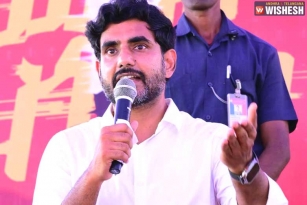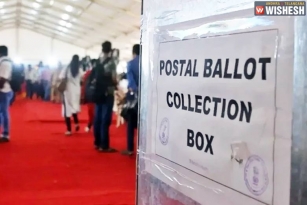
Mangalgiri means auspicious hill, the word ‘Mangal’ means auspicious and the word ‘giri’ means hill. Mangalgiri is situated in the outskirts of Vijayawada, a well known city in the state of Andhra Pradesh, India. Mangalgiri is only 12 KM away from Vijayawada. Mangalgiri is well connected with train and buses and is accessible from Vijayawada, Guntur and Tenali. Mangalgiri is a small village with a population of around 80000. The main occupation of this village is weaving and paddy cultivation. Around 60% of the population belongs to Padmasali, who are traditionally related to weaving. There are around 5000 weavers in this village.
Mangalgiri is blessed with two well known temples. One is in the valley, Sri Lakshmi Narasimha Swamy temple believed to be built by the King Krishna Devaraya. The other temple is on the hilltop known as Palaka Narasimha Swamy. Narasimha is believed to be the 4th incarnation of Lord Vishnu. This incarnation has a lion head and human body. This incarnation was made to show, how the true faith in God will save one from all the difficulties. The deity in the temple is ‘Swayambhu’ means self originated. In this temple the main offering is Palakam or Panakom - a juice made with jaggery, dry ginger and lime, which is poured into the mouth of Sri Narasimha Swamy. Eventhough Palakam is sweet and everyday hundreds of litres of Palakam is offered there are no ants seen anywhere near the sanctum sanctorum.
It is believed that the temple of Sri Lakshmi Narasimha in the valley was found by the epic hero Yuddhisthira. Yuddhisthira is the eldest brother of Pandavas in the Hindu epic Mahabharata, who is known for his noble life and his non compromising attitude towards truth. The temple dedicated for the worship of Sri Lakshmi Narasimha has been constructed architecturally to support the 11 storied Raja Gopuram. Raja Gopuram is the main entrance to the temple premises. Usually this gopuram will be sculptured with the story of the main deity of the temple. Huge gopurams are the specialty in south Indian temples. These gopurams will have sculptures of the period of construction. These gopurams are constructed using huge granite stones. These stones are transported to the site using elephants and large number of artisans had put their hard effort to make these gopurams spectacular, which are existing for more than 400 years. The interiors of the temple have inlaid inscriptions that reveal that the famous King of the Vijaynagar Empire, Krishna Devaraya had visited this temple. The temple tank which is adjacent to the temple is believed to be created by Demigods and is named Lakshmi Pushkarini.
A unique feature of Palaka Narasimha Swamy temple in Mangalgiri is the magical disappearance of the Palakam offered to the shrine. When palakam is poured into the mouth of the deity, half of the palakam is returned. The temple is opened only from morning to afternoon. It is believed that Demigods perform puja to Sri Narasimha Swamy in the night.
In the temple, there is no deity of god, only a wide opened mouth of nearly 15cms is seen. This mouth is covered with the metal face of Narasimha Swamy. Here the deity is offered palakam. The priest will pour the palakam with a conch into the wide opened mouth. While pouring, we can hear the sound, like someone is drinking water. When the sound stops, the priest will stop pouring. The priest has shown us that the conch was not emptied, when poured into the mouth. This means that god is satisfied with the given palakam. This miraculous act rekindles faith and spiritualism in the people who visit the temple. After worshipping palaka Narasimha Swamy, when you go up, you can see Lord Vishnu sleeping on Anantha the Snake God and this posture is called Ananthasayanam, which can be seen in a small cave.
The Palaka Narasimha Swamy temple is accessible through road for which vehicles are available on rent, or else one can reach the temple through stairs which leads to the temple. There are 365 steps to climb. One can see a bird’s eye view of Mangalgiri from the top of the hill. From the top of the hill we can also see the gopurams of Lakshmi Narasimha Swamy temple in the valley.
By Premji

























